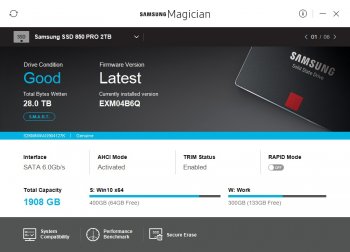My last system SSD died after two years of heavy use.
Some reports indicate that overprovisioning has benefits. But it seems like as long as trim is enabled and the drive is left with a lot of free space the same impact is achieved.
I am using dual MX500 2TB for system and data formatted APFS. On Windows the Crucial Storage executive provides a special function to reserve space for OP.
I can see the need for OP designated space without trim.
No clear answer in articles I searched.
Some reports indicate that overprovisioning has benefits. But it seems like as long as trim is enabled and the drive is left with a lot of free space the same impact is achieved.
I am using dual MX500 2TB for system and data formatted APFS. On Windows the Crucial Storage executive provides a special function to reserve space for OP.
I can see the need for OP designated space without trim.
No clear answer in articles I searched.


